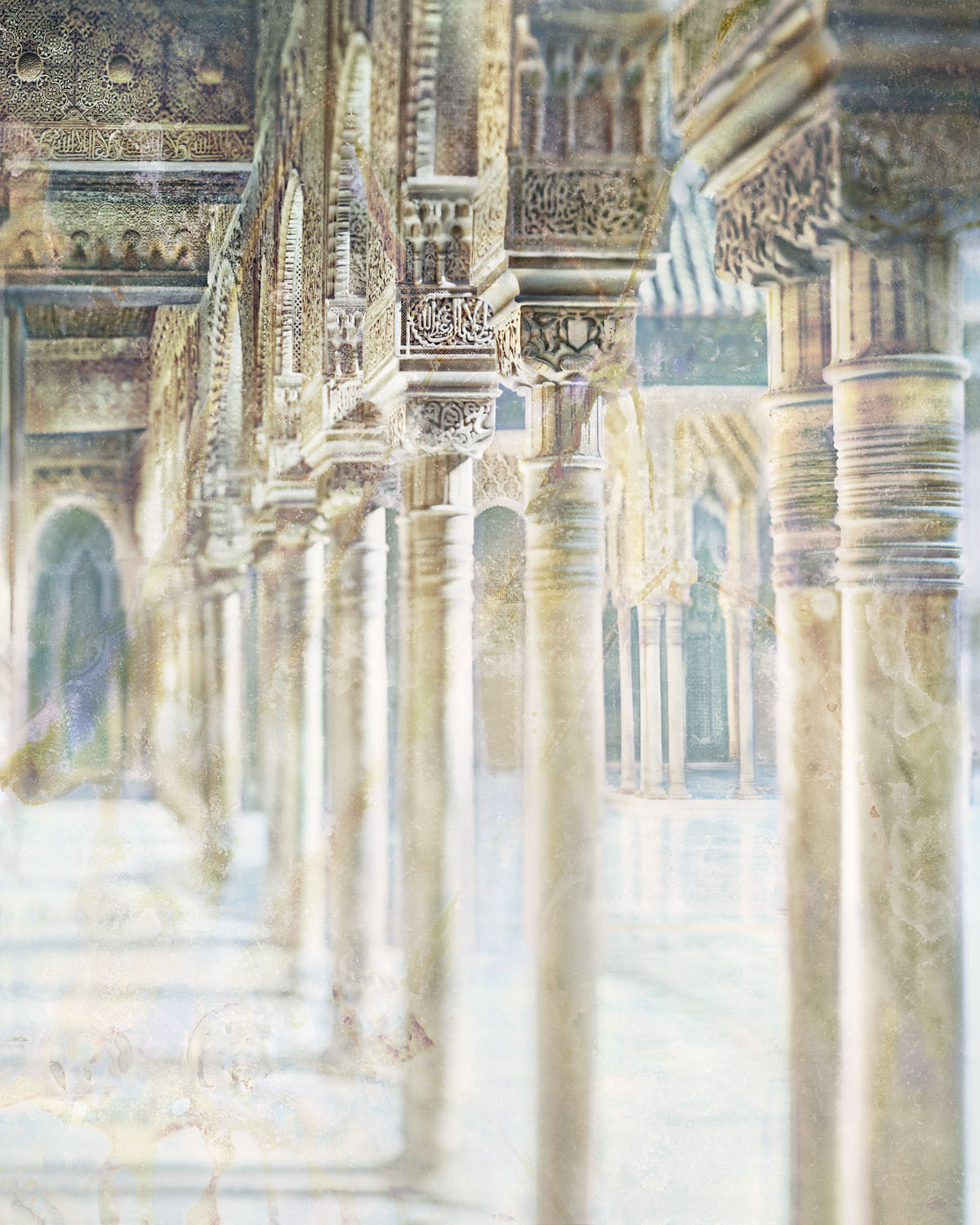 BACK
BACK
The palace of the generalife
The Generalife, built between s.XII and s.XIV, is the palace used by muslim kings as resting place.
 Make your selection to discover more places
Make your selection to discover more places
The entrance is currently denominated the Court of the Dismount (Patio del Descabalgamiento) owing to the presence of footrests that facilitate horse riders in their dismount. Also on hand are two side buildings, which were probably used by stable hands.
Once entrance was gained, the visitor would have to climb a stairway past the security guard benches, toward a room above, with a control window.
The second court, which underwent changes, is located at the top and surrounded by arched galleries, except for in the front, where access to the interior of the palace is gained.
Entrance to the palace itself is through a tiny door, today partially hidden by undergrowth and embedded in traces of marble, with a tiled lintel and the ever present arch-key marking. From there, a steep narrow stairway leads to a residence, connected to the Court of the Main Canal (Patio de la Acequia), called the North Pavilion (Pabellón Norte), which in turn leads to an arcaded gallery, with five arches and bedchambers, and on to the Royal Chamber (Sala Regia) and the observation point of Ismail I.
The Royal Chamber (Sala Regia) is noted for its plasterwork, niches and lovely stalactite capitals. The often repeated interior layout includes bedchambers framed by arches. Of particular note is the stalactite outset cornice supporting the ceiling.
The Generalife Palace Low Gardens
Beneath the Palace North Pavilion lies a small closed garden that dates back to the period of Arabic rule. In 1526 Andrea Navagero described its walls as being covered with ivy and having a fountain that shot water ten fathoms into the air.
To the west of the garden a staircase leads slightly above to a garden beneath the Palace West Gallery. The garden was designed in 1928 by Torres Balbás, after the building adjacent to the North Pavilion had been demolished.
West of that, and slightly lower, covering the entire length of the Main Canal Gallery Court (Galería del Patio de la Acequia), lie the gardens that, though somewhat altered now, in the 19th century were depicted in an engraving by the French archaeologist and traveller Alexandre Laborde.

La Alhambra, a look from Fernando Manso
MORE INFORMATION
WASHINGTON IRVING AND THE ALHAMBRA
MORE INFORMATION
THE GATE OF BIBARRAMBLA. Historical report of the monument and its rediscovery
MORE INFORMATIONTHE EMPEROR´S CHAMBERS
MORE INFORMATION
The Council of Alhambra and Generalife will refund automatically the full amount of the bookings
MORE INFORMATION





 Contact
Contact


















